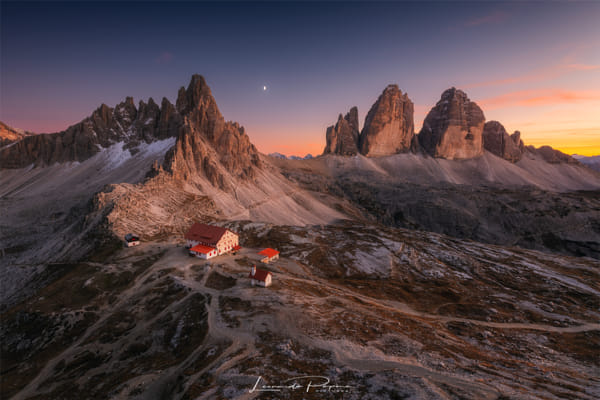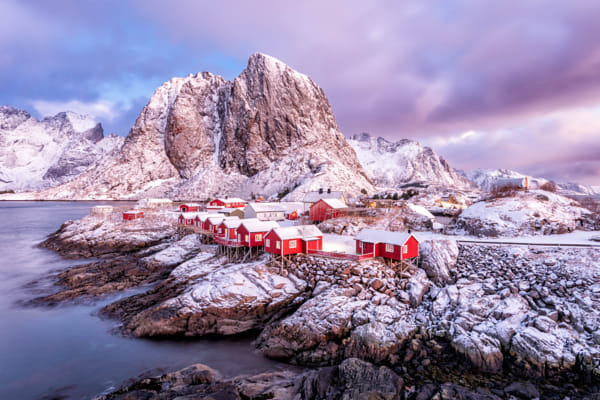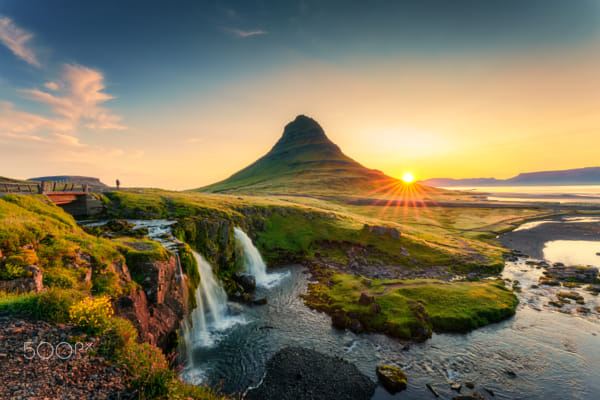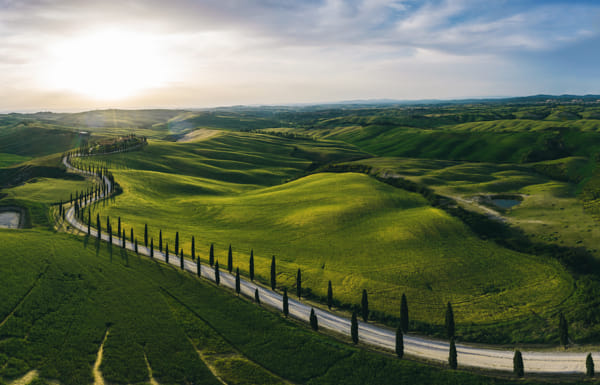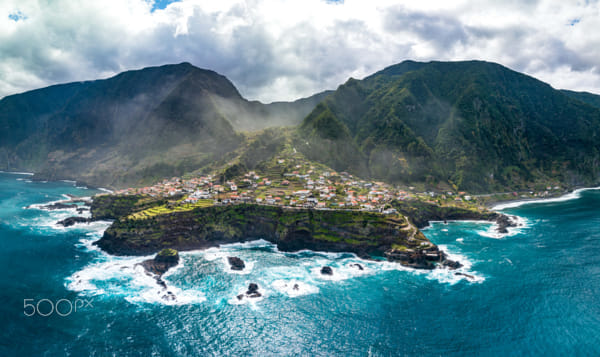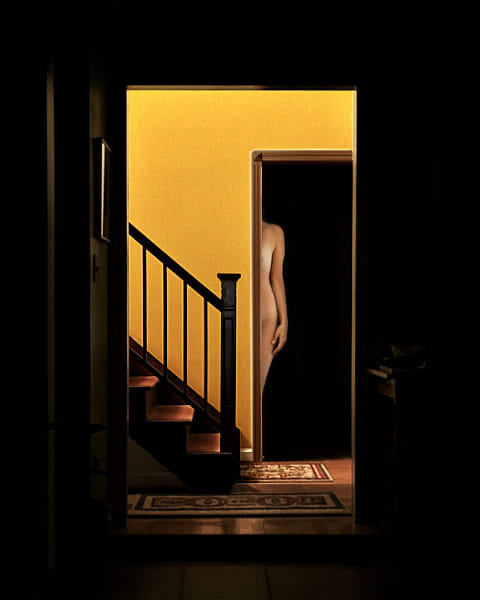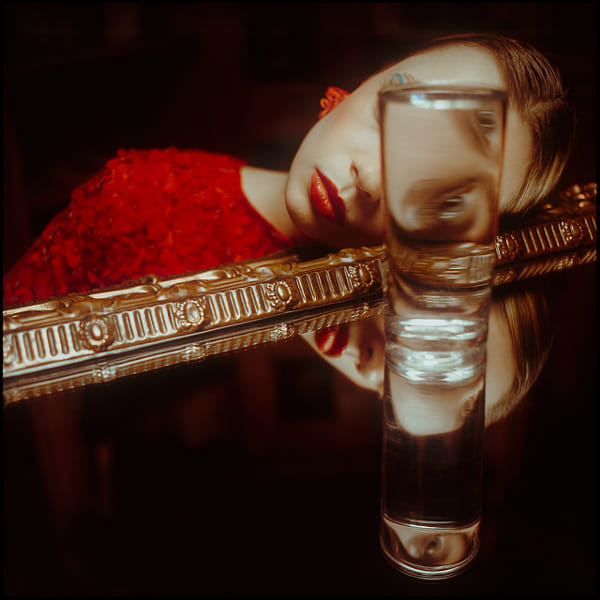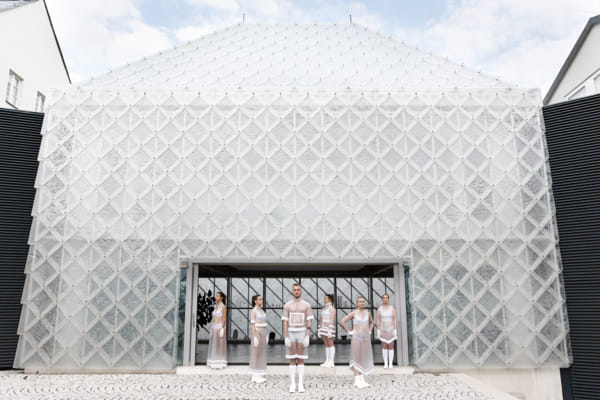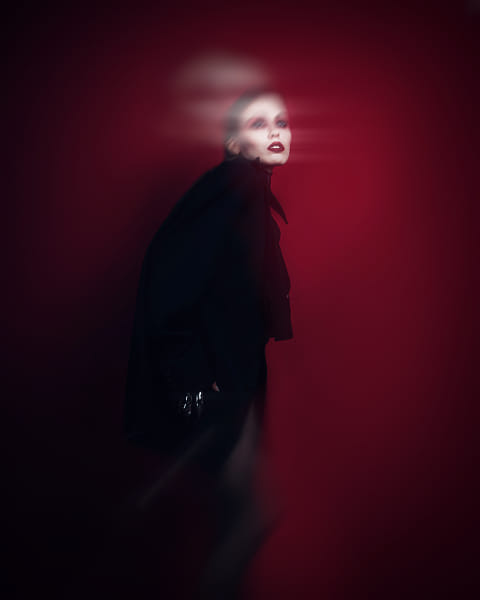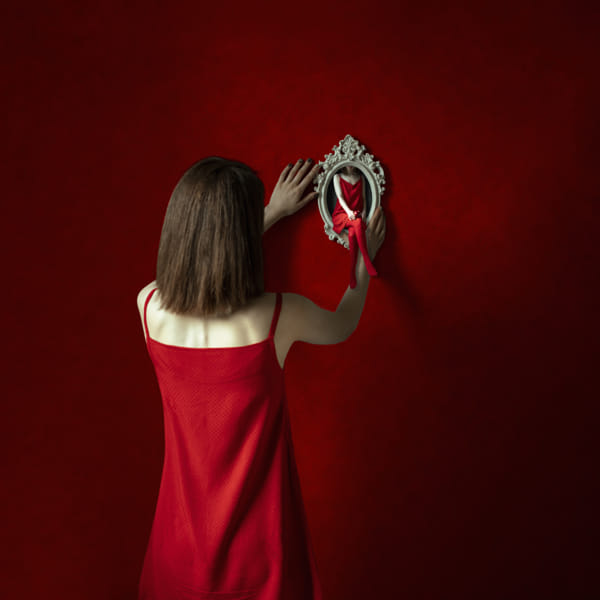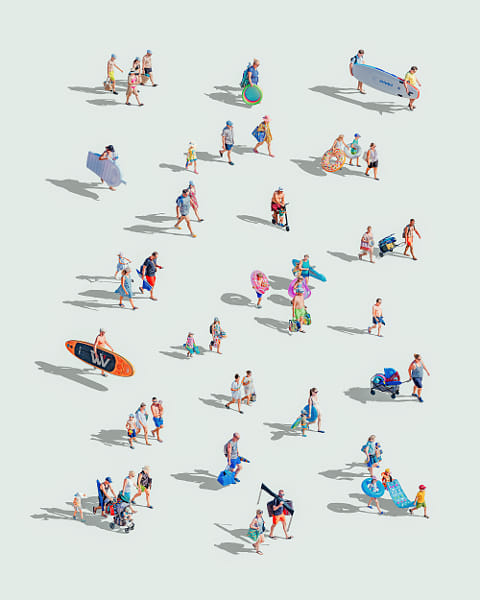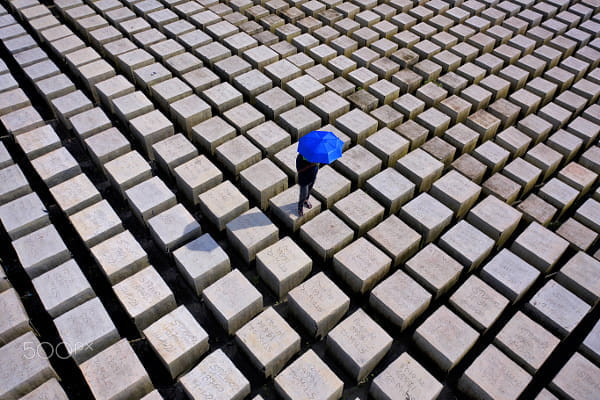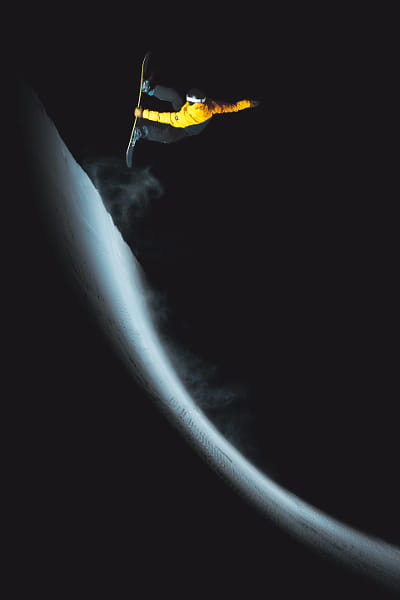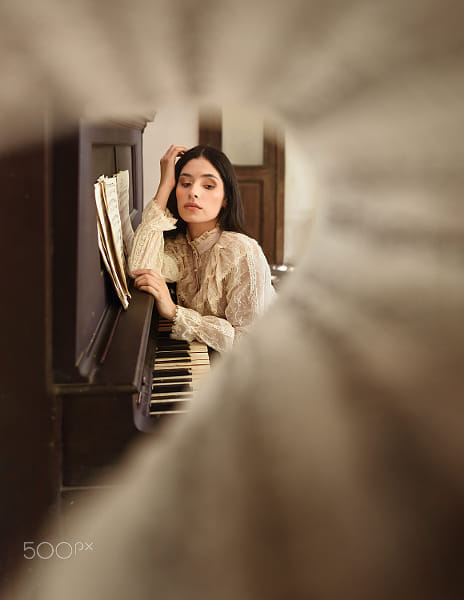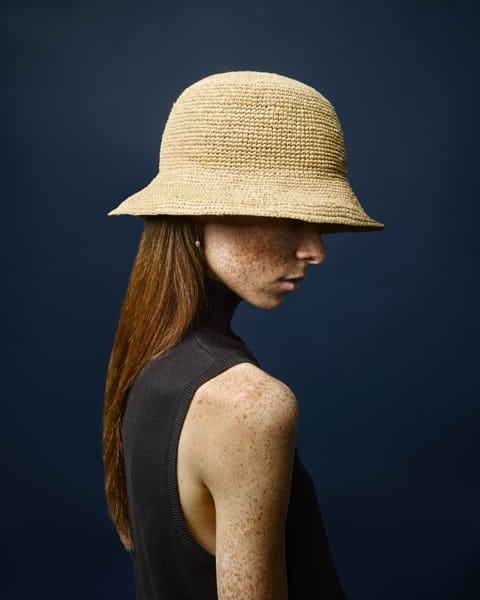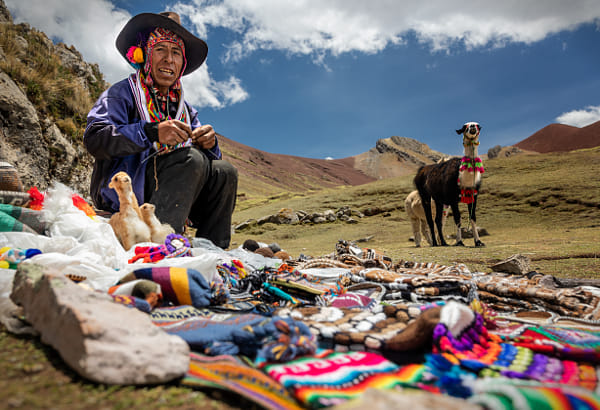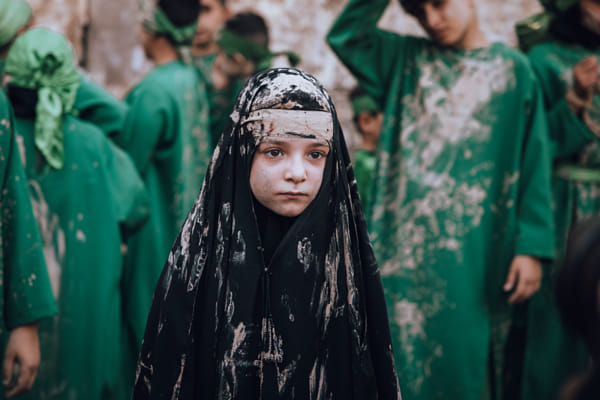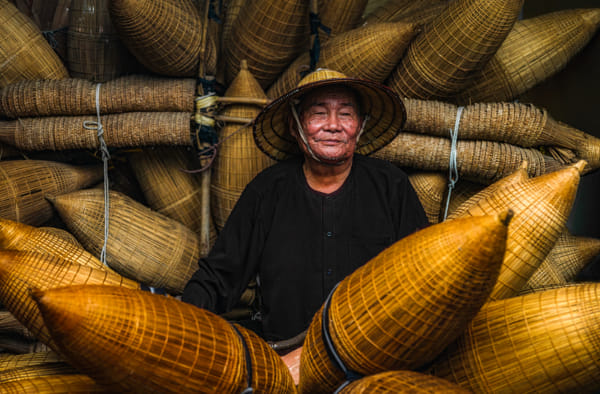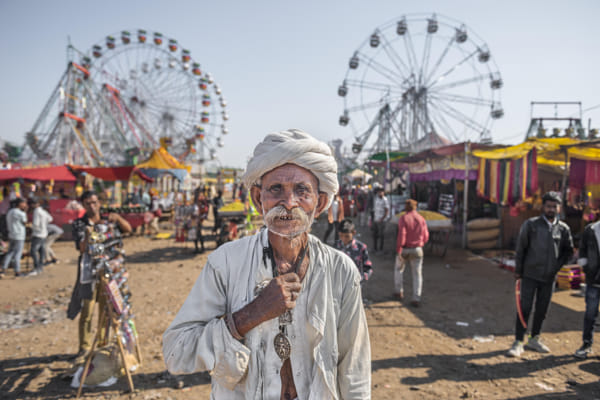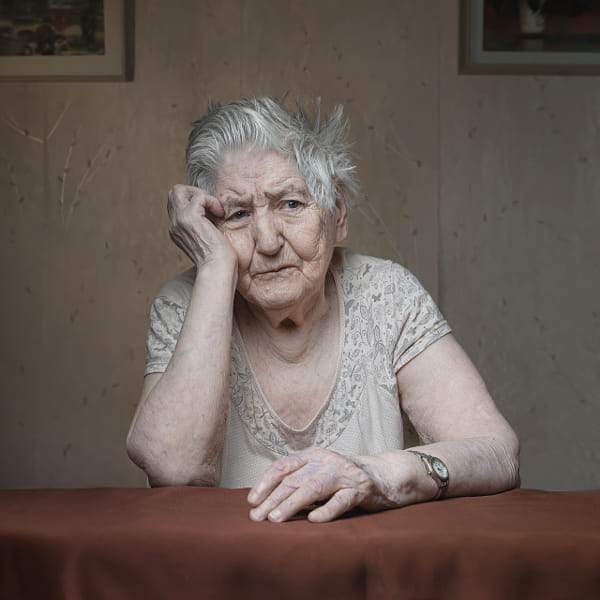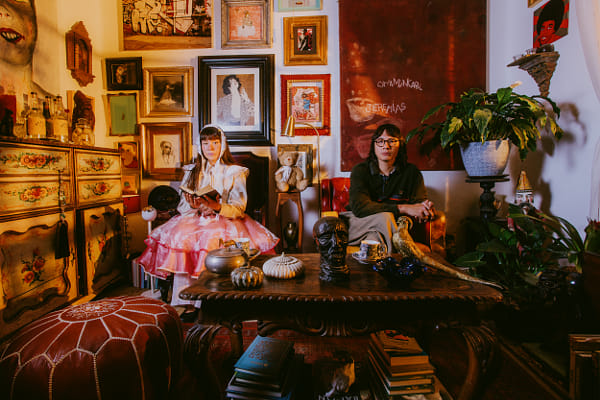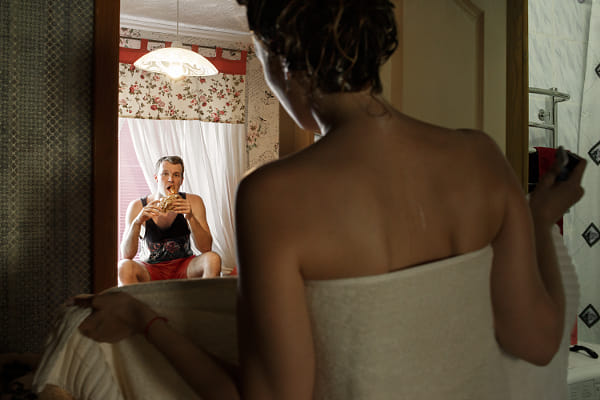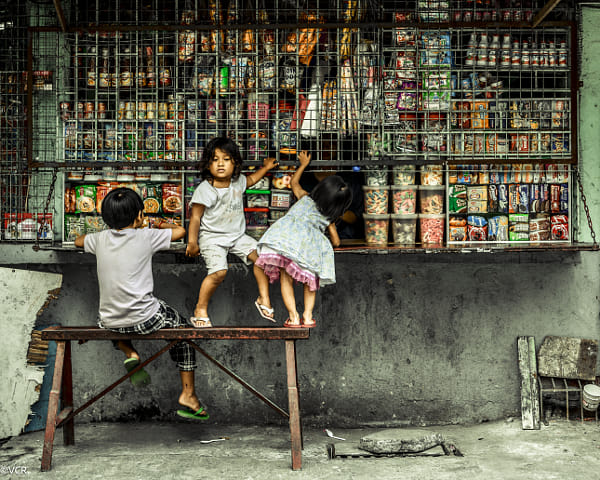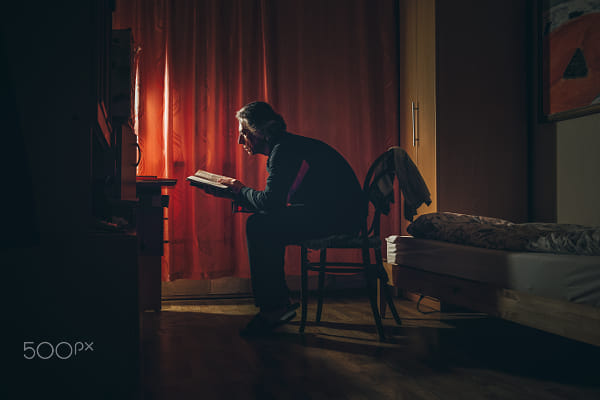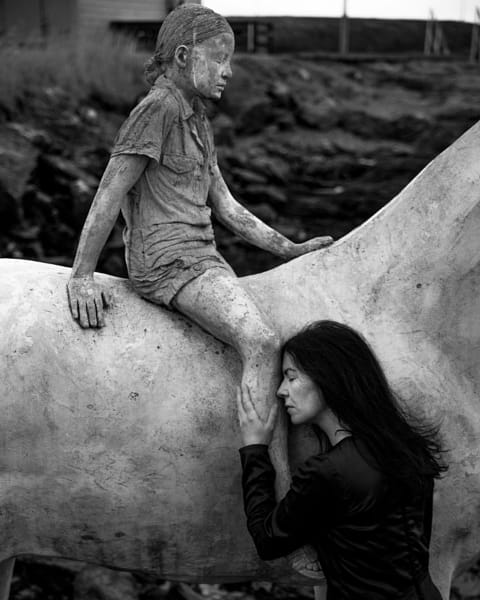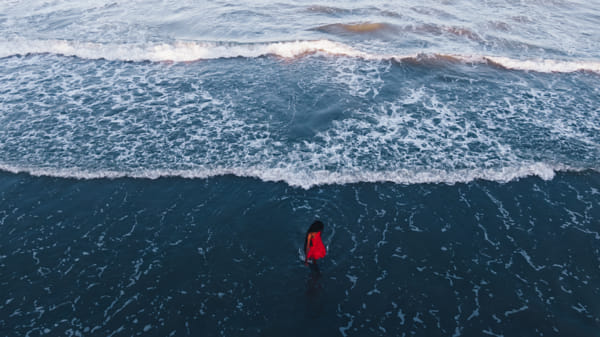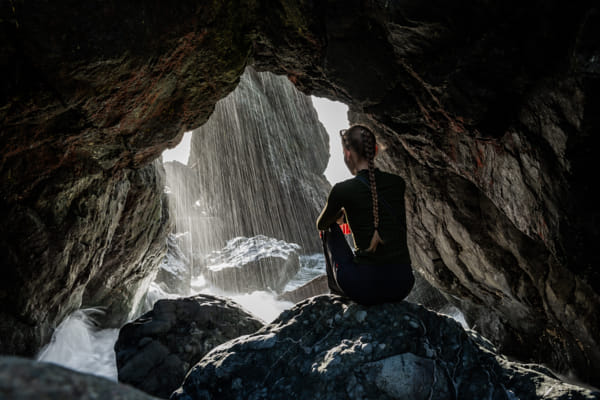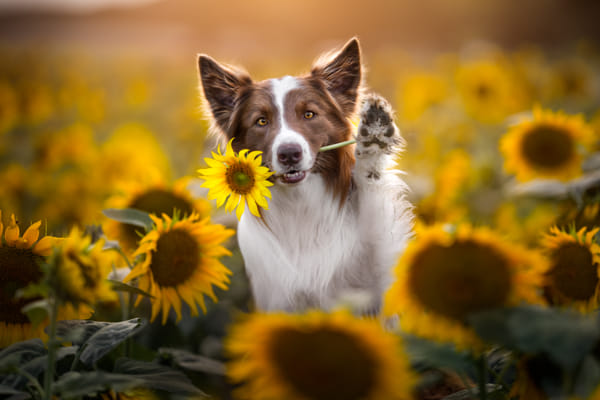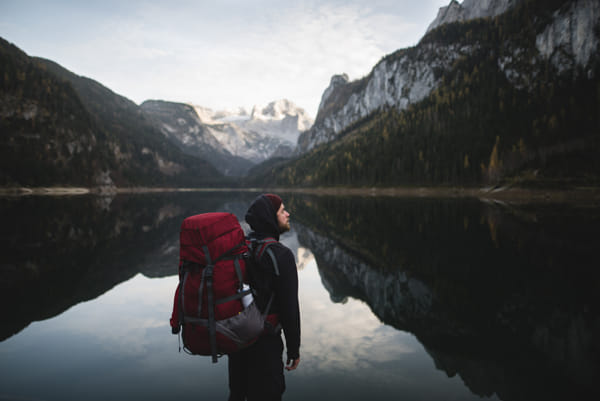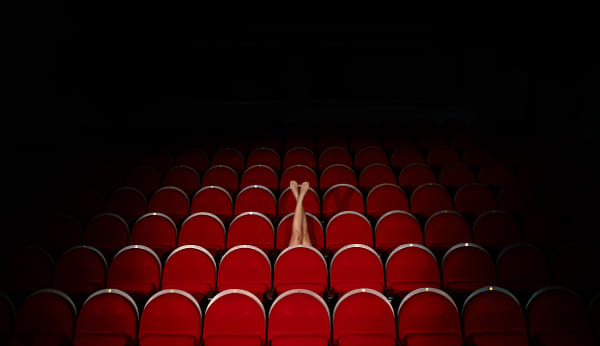Photography tutorial videos on my www.Rumble.com channel. You can view this and more by simply clicking on the picture below.
DarrylT
PHOTOGRAPHY BLOG
Saturday, June 1, 2024
Sunday, April 28, 2024
The Celebrities You Might Not Know Are Into Their Photography
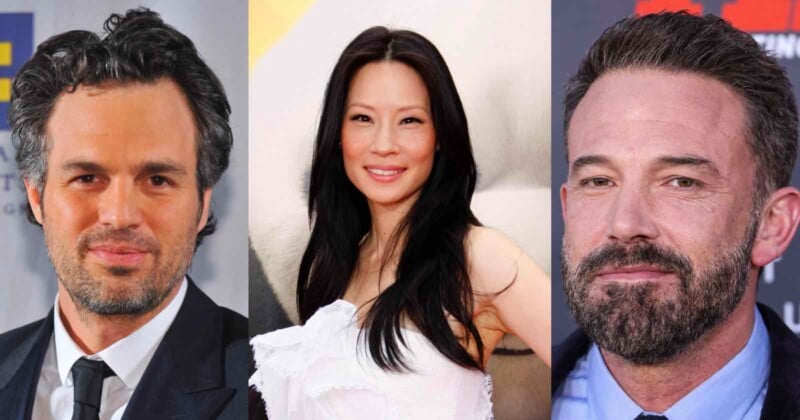
Everyone is a photographer, and that includes celebrities. But, some celebrities are seriously into their photography.
Here is a list of celebrities who take their photography more seriously than others, investing both significant time and money into developing their craft.
#1. Andy Serkis
Andy Serkis, filmmaker and actor famous for his unforgettable role as Gollum in the Lord of The Rings trilogy, is also a hobbyist photographer.
In 2019, Serkis had an exhibition of some of his photographs in the Leica Gallery in Mayfair, London. The exhibition — which was called “Because It’s There” — featured photographs that Serkis took on his trek to Everest Base Camp. The exhibition included portraits of sherpas he encountered on the climb as well as images that celebrated the “bravery, tenacity, and humor” of anyone who risks their life scaling mountains.
#2. Ben Affleck
While the public knows him best as an actor,
Ben Affleck has been an avid photographer since high school. Affleck is
constantly shooting photos and says he is fascinated with cameras and
lenses to the point that it has become a “very serious addiction.”
Affleck says he regularly “get[s] made fun of” for being a huge camera geek and his wife Jennifer Lopez jokingly referred to her husband’s photography obsession in a new documentary.
Affleck has reportedly amassed a huge private collection of vintage camera lenses including an “unbelievable” set of Canon K35s that are rehoused, some old ARRI/FUJINON Alura Zooms, and “crazy Russian lenses from the 1950s” that he purchased on eBay among his collection.
#3. Jason Lee from My Name is Earl
Actor Jason Lee, best known for his role in NBC’s hit sitcom My Name Is Earl, recently opened a photography shop and camera store in Los Angeles with fellow photographer Raymond Molinar.
An avid photographer, Lee began shooting regularly in the early 2000s and has published multiple photography books, including A Plain View in 2018. He dove headfirst into photography in 2002 when he bought a Leica M6 and Mamiya RZ67 medium format camera.
Lee has long stuck with film photography, and analog equipment is the primary focus of his new L.A.-based store.
Mamiya RZ67 medium format camera.
Lee has long stuck with film photography, and analog equipment is the primary focus of his new L.A.-based store.
#4. Frank Ocean
Grammy award-winning singer Frank Ocean is also a film photography fanatic. Ocean’s passion for analog photography led Vogue to commission him to shoot behind-the-scenes images of the Met Gala in 2019 on his Contax T3. Last year, Ocean published a 48-page photo book Mutations that featured a retrospective of portraits and images shot mostly by the singer himself between October 19 and December 22, 2022.
#5. Mark Ruffalo
Actor Mark Ruffalo — who starred in the hit film Poor Things earlier this year — has also been an active street photographer for the last decade.
“I’ve been doing street photography on and off for about 10 years. I just like how it captures people naturally; when people know a camera’s on them, they immediately change their behavior,” Ruffalo tells The New York Times.
For several years, Ruffalo regularly shared some of his street photography while on subway trains or at stations to his 20 million followers on Instagram.
#6. Jessica Lange
Before becoming a two-time Academy Award-winning actress, Jessica Lange studied photography at the University of Minnesota after winning a scholarship to study the arts. Lange took up photography again in the 1990s when her partner, late playwright and actor Sam Shepherd, gifted her a Leica camera as a gift. Since then, she has been an active photographer and released several photography books including Highway 61.
Highway 61 was a photographic tribute to the storied route that Lange has traveled numerous times since her childhood in Northern Minnesota.
“It’s a great counterpoint to filmmaking because it’s a private, solitary experience,” Lange says of photography.
“It’s like writing or painting; it’s something you can do on your own.
“Acting is a co-dependent art form, and the actor is not in control. And filmmaking definitely informs the decision to photograph something. I’m drawn to situations with a dramatic feel to them as far as lighting or backdrop or people’s presence, the way someone stands.”
#7. Brendan Fraser
Academy Award-winner Brendan Fraser is also passionate about film photography and had exhibitions of the images that he took while filming on location for movie like The Mummy. According to Tech Radar, Fraser would appear on the set of TV show Scrubs carrying a Polaroid, a folding pack camera, and a Holga camera as he is a huge fan of lo-fi photography. Fraser even has a dedication in the book Collector’s Guide to Instant Cameras.
#8. Gary Oldman
Actor Gary Oldman — known for his work on Batman, Leon, and the Harry Potter films — is a passionate photographer too. Oldman mainly shoots black-and-white images behind the scenes of his films. But he also has a love of wet-plate photography. The actor has exhibited his photography a few times including in Berlin, Germany in 2012 and at the Flowers’ Gallery in East London in 2016. For his exhibition at the Flowers Gallery, Oldman shot portraits of artist George Blacklock entirely on a Swing-lens Widelux F6B.#9. Cole Sprouse
Riverdale actor Cole Sprouse has an avid interest in photography. Sprouse took lessons in the craft at New York University (NYU) and went on to launch his own photography website in 2011.
He has since shot assignments for publications such as Vogue, W Magazine as well as fashion campaigns for Primark and Rabane.
“If I wasn’t acting I’d be doing that full-time,” Sprouse says about photography.
“I think with the way that we digest information nowadays, photography has become a perfect avenue to give the audience an understanding of yourself that goes a little deeper than a 10-minute interview about a show you’re doing or something of the sort. It just made sense to me.”
#10. Julian Lennon
Julian Lennon, the son of John Lennon and
his first wife Cynthia, is a philanthropist, musician, and a
photographer. In fact, he counts photography as his greatest passion in
life.
“Photography is the thing that makes me happiest, no question about it,” Lennon told The Guardian in 2013.
As a child, Lennon says he has always enjoyed taking pictures and his father John bought a Polaroid SX-70 when he was 10 years old. But Lennon says he became serious about photography after shooting his half-brother Sean Lennon’s tour in 2007.
Since then, Lennon has had several exhibitions of his photography. His first exhibit “Timeless” in 2010 included portraits of Bono and U2 in a recording studio and Princess Charlene of Monaco moments before being crowned Princess.
Want to know more about Photography? Click here:
Monday, April 22, 2024
3 Free Photography Cheat Sheets That Will Help You Understand the Basics


As photographers, each time we press that shutter button, we’re always striving for the perfect shot. If you want to get consistent results, without relying on luck, you gotta know and practice the fundamentals of photography.
This post provides you with 3 printable cheat sheets from our best-selling Snap Cards: Essentials set, for free. They’ll help you on your quest to master the basics of photography- right when you need it most- when you’re out taking photos! The cheat sheets cover the topics of Exposure Triangle, Histogram, and Photographing in Manual Mode. Make sure you download them, print them and carry them with you the next time you’re out taking pictures!
If you’d like to take your photography to the next level, do check out the complete Snap Cards: Essentials set – it’s like having personal photography mentor with you! Take a look at them here.
 The
exposure triangle is among the most fundamental of photography concepts
that you should gain a good understanding of, if you take photography
seriously. This cheat sheet will help you visually understand the
relationship between the three pillars of exposure- shutter speed,
aperture and ISO. Download now →
The
exposure triangle is among the most fundamental of photography concepts
that you should gain a good understanding of, if you take photography
seriously. This cheat sheet will help you visually understand the
relationship between the three pillars of exposure- shutter speed,
aperture and ISO. Download now →
 The
histogram is a really useful tool that can help you nail the exposure
in your photographs. You can tell when a photo is underexposed or
overexposed by looking at its histogram and know which tones need to be
worked on during post-processing. Download now →
The
histogram is a really useful tool that can help you nail the exposure
in your photographs. You can tell when a photo is underexposed or
overexposed by looking at its histogram and know which tones need to be
worked on during post-processing. Download now →
 To
gain complete control over the photographic process, you should have a
good grip on the manual mode of your camera. Whether it’s for a
technical use like getting a sharp photograph with fast shutter speed or
using it creatively for capturing motion with slow shutter speed,
manual mode is the place where the endless photographic possibilities
really start to shine. Download now →
To
gain complete control over the photographic process, you should have a
good grip on the manual mode of your camera. Whether it’s for a
technical use like getting a sharp photograph with fast shutter speed or
using it creatively for capturing motion with slow shutter speed,
manual mode is the place where the endless photographic possibilities
really start to shine. Download now →
To get the most out of these cheat sheets, we recommend you to print them and carry them with you, or download them on your mobile device for when you’re out photographing.
BONUS– I've got something special for you on the next page...
Do you like the idea of having a photography training bootcamp in your camera bag? Or would you simply like to improve your photography by way of a tested training method? One that thousands of photographers have used successfully? Take a look at our best-selling Snap Cards: Essentials: 20 printable key photography lessons that you can take with you anywhere.
Friday, April 5, 2024
The winners & finalists of the 500px Global Photography Awards
After much anticipation, the curtain has been drawn, and the spotlight is now on the incredible talents behind the lens. We’re thrilled to unveil the exceptional winners and finalists of the 2023 edition of the 500px Global Photography Awards.
From seasoned professionals to dedicated hobbyists, this year’s competition attracted photographers from all walks of life, each vying for the title of 500px Photographer of the Year and a chance to claim remarkable prizes from amazing brands.
In this third installment of the awards, participants had the opportunity to showcase their best works captured or uploaded throughout 2023. With categories spanning Landscape, Fine Art, Technical, Documentary, Storytelling, and Commercial Content, there was something to captivate every eye and imagination.
Today marks the grand unveiling of our winners, finalists, and the photographers who have secured the coveted titles of 500px Photographer of the Year. Let’s celebrate their extraordinary talent and creativity!
Drum roll…
The Photographers of the Year are…
Serhii Fett and Richard Beresford Harris—congratulations!
You will find their winning images, and the rest of the winners and finalists, below.
The winners and finalists
Landscape
PRO First Place Winner
Leonardo Papèra
View their Profile
What our Editors loved about this photo: The Dolomites are a sought-after, highly photographed locale, but when they are captured with this precision and attention to detail, they become a true wonder. Leonardo leans into the soft light and brings the peaks, valleys, and cotton candy sky to life through his camera. The contrast is just right, the sharpness uncompromising, and the framing is done in a way that embraces the rules without hinging on them. Yes, landscape photography is made a little easier when your surroundings are this stunning, but mastering precision and color tones like this can only be done by a skilled eye.
HOBBYIST First Place Winner
Richard Beresford Harris
View their Profile
What our Editors loved about this photo: Mountains are massive natural features that convey a sense of grandeur and awe-inspiring scale. By introducing a person into the scene, Richard provides a reference point for the viewer, allowing them to better understand the immense size and majesty of the landscape. This contrast in scale emphasizes the enormity of the mountains and adds depth to the composition. The photographer positioned the person central in the landscape in the lower third, and used that mountain peak to create visual intrigue. The textured green, suddenly juxtaposed by the blue of the water, creates depth and leads to the layer of snow-capped mountains.
Finalists
Gianluca Rubinacci (Hobbyist)
Dimo Hristev (Pro)
Thanayu Jongwattanasilkul (Pro)
Bahadir Sansarci (Hobbyist)
Mike Tesselaar (Pro)
Fine Art
PRO First Place Winner
Serhii Fett
View their Profile
What our Editors loved about this photo: A frame, within a frame, within a frame. There are many layers to Serhii’s image—the deep dark entry, that lacks detail with its extreme shadows, guides you to a staircase, where light pours in, and then back to darkness that is contrasted with a bold sliver of a silhouette. Every decision is intentional—the geometry of the lines and the darkness that is broken by the brightness and warmth of the yellow and pink of skin to then dissolve back to black. It’s a captivating capture that brings forth more questions.
HOBBYIST First Place Winner
Lukasz Spychala
View their Profile
What our Editors loved about this photo: A play on perception, on what is real and what’s not, in the way that only a fine art photo can do. It’s a mesmerizing capture that plays on soft tones, reflections, and leading lines. The subject is positioned perfectly, and the distortion is so artfully done. The eye is drawn to the bold red lip and the distorted eye in a manner that draws the viewer in. At first glance, what could appear to be a simple shot is Lukasz mastering the solo subject and crafting it into a conceptual triumph.
Finalists
Milos Nejezchleb (Pro)
Prosto_Yanka_ph (Hobbyist)
Alireza Karimian (Pro)
Michal Zahornacky (Pro)
Sabina Akter (Hobbyist)
Technical
PRO First Place Winner
Dina Belenko
View their Profile
What our Editors loved about this photo: The power of this shot is in the details—the water droplets, the prop styling, and the lines. Dina knows how to craft a shot in the studio, wielding artificial light to her advantage and using post-processing to elevate the shot as-needed, as is evidenced by the perfectly levitating drop of water.
HOBBYIST First Place Winner
Tinu Muller
View their Profile
What our Editors loved about this photo: Most winter sports photography can entail lots of white; however, Tinu’s intentional decision to distill the shot down to the essentials while catching the snowboarder suspended midair pays off. The slope of the half-pipe and the yellow of the athlete pop out from the darkness in a manner that marries both minimalist and action photography.
Finalists
Yevhen Kostiuk (Pro)
Elena Novikova (Pro)
Nicolas Doyen (Hobbyist)
Lara Mora (Hobbyist)
Mads Thomsen (Pro)
Documentary
PRO First Place Winner
Nicolas Castermans
View their Profile
What our Editors loved about this photo: A successful documentary photo conveys emotions through its subject while also relaying an event or experience. Nicholas hits the nail on the head with this poignant photo of a lady in the middle of a ritual that takes place in the mountains of Peru annually. Her stare drives straight at you with a sense of calm and peace amid a mass of people in celebration. There is a startling power in holding the focus of a stranger for a documentary image, and the precise clarity of the lady’s eye connects the viewer with her instantly, while keeping the crowd just in focus enough to give context to the festival.
HOBBYIST First Place Winner
Sebastian Szczepanowski
View their Profile
What our Editors loved about this photo: The everyday setting is ripe with opportunities for a true documentary-style photo. Sebastian’s depiction of fatherhood proves this—the creativity comes from the unique overhead vantage point, while the scene itself is quite simple: a father soothing his child in a stroller. An ordinary setting, but relayed through the camera in a way that shows an intimate relationship, a habit, and lives being lived—this is the core of documentary photography.
Finalists
Roy Vereijken (Hobbyist)
Mustafa AbdulHadi (Hobbyist)
Dee Potter (Pro)
Roberto Pazzi (Pro)
Yana Zyryanova (Pro)
Story-Telling
PRO First Place Winner
Andrea Gonar
View their Profile
What our Editors loved about this photo: A layered image telling the story of family and telling a narrative as much through the space and setting as the brother and sister duo. There is simultaneously an airy feeling through the colors used, the posing and spacing, and facial expressions, while also creating a sense of home in the props. Is he bored? Is she comfortable? Why the teddy bear? As you continue to inspect the image, more questions spring up, and the complexity of the scene leaves the viewer wondering what the true story behind it may be.
HOBBYIST First Place Winner
Oksana Karashchuk
View their Profile
What our Editors loved about this photo: A playful story unfolds between husband and wife in Oksana’s creative self-portrait. The way the photographer artfully frames and lights the male as he sits in shock makes the eye gravitate to him. He is also clearly communicated as the main character by being the only subject in focus. As the eye travels to the forefront of the image, we understand the full narrative, The wife playfully has her towel open, however, lighting is used with finesse as she stands heavily draped in the shadows to maintain an air of mystery. Photographer or storyteller—Oksana does both well.
Finalists
Vincenzo Carrieri (Hobbyist)
Gustavo Chams (Pro)
Refat Mamutov (Pro)
Darko Trajkovic (Hobbyist)
Arunas Gricius (Pro)
Commercial Content
PRO First Place Winner
Michal Jasiocha
View their Profile
What our Editors loved about this photo: Michal Jasiocha’s photo is sharp, well-lit, and has creative lighting that makes it ideal for a variety of commercial uses. The model is exercising using rings in a gym, which can connect with themes like fitness, health, balance, endurance, and personal development. While fitness-themed commercial content can be a saturated category, Michal is able to elevate his shoot with dynamic lighting and rich copy space, perfect for potential text or branding, an essential quality for commercial photography.
HOBBYIST First Place Winner
Laro Pilartes
View their Profile
What our Editors loved about this photo: Laro uses a drone to capture the dynamic perspective of a young woman on a beach in a red dress. Because of its versatility, this photo works well with commercial photography themes of travel, vacation, and adventure, as well as conceptual issues like identity, health, and romance. The wide composition of this photo makes the model somewhat anonymous and mysterious and allows the viewer to imagine themselves in their place.
Finalists
Agnieszka Wieczorek (Hobbyist)
Iza Lyson (Pro)
Serge MELESAN (Pro)
Alex Karamanov (Pro)
Nika Pailodze (Hobbyist)
As we celebrate the incredible talent showcased in the 2023 500px Global Photography Awards, we extend our heartfelt gratitude to all participants, sponsors, and supporters who made this event possible. A special thank you to our sponsors, including JOBY, Exascend, DJI, and Xpozer, whose generous contributions helped make this year’s awards a success.
As we reflect on the incredible submissions and exceptional winners, we eagerly anticipate the next edition of the awards in 2024. With your continued support, we are confident that the 2024 awards will be even bigger and better, offering new opportunities to showcase your talent and creativity on a global stage. Stay tuned for updates, and until then, keep capturing the world through your lens.
-----------------------------------------------------------------
Photography Freebie
Getting Creative with Nature and My Camera – Free Quick Guide
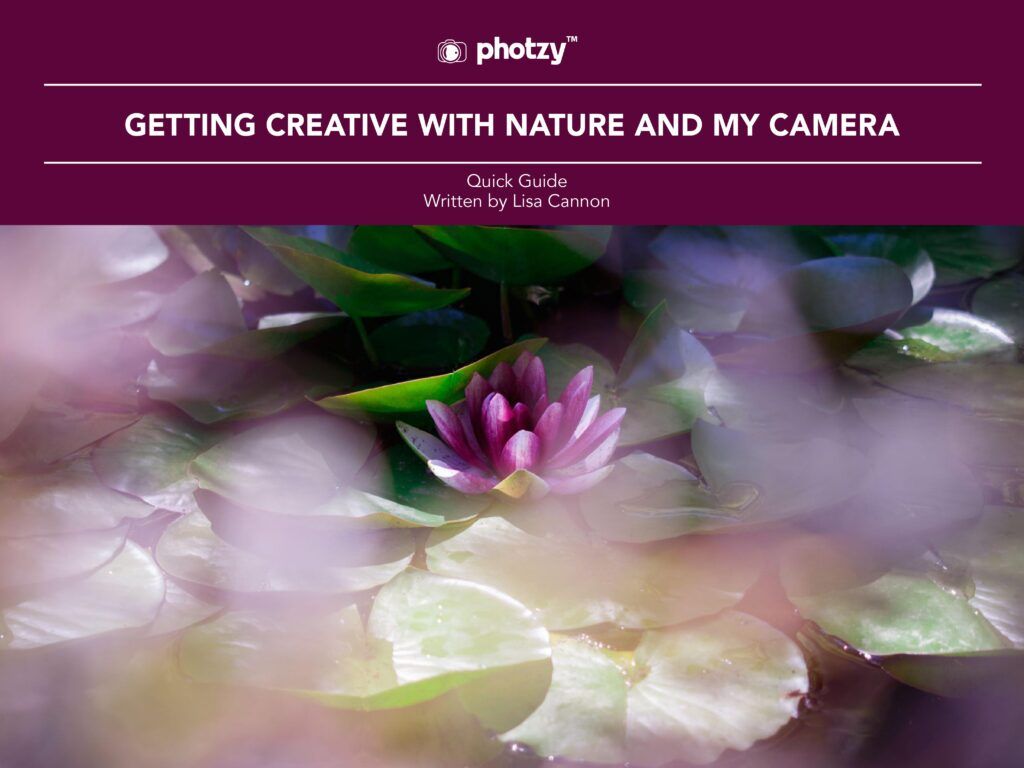
Do you love nature? Are you looking to include more nature images in your photography portfolio?
Or are you looking to add creativity to the nature images that you already love to capture?
This guide will introduce you to a few of Lisa Cannon’s favorite tips and techniques for capturing creative nature images.
Here is what you will learn about:
- Finding your subjects
- Capturing Your Images
- Lighting Matters
- Using Specialized Techniques
- Choosing Black and White or Color
- Wide Views versus Up Close Details
- When All Else Fails — Cheat
Are you ready?
Grab your exclusive copy below!
Photo Credit: Lisa Cannon



